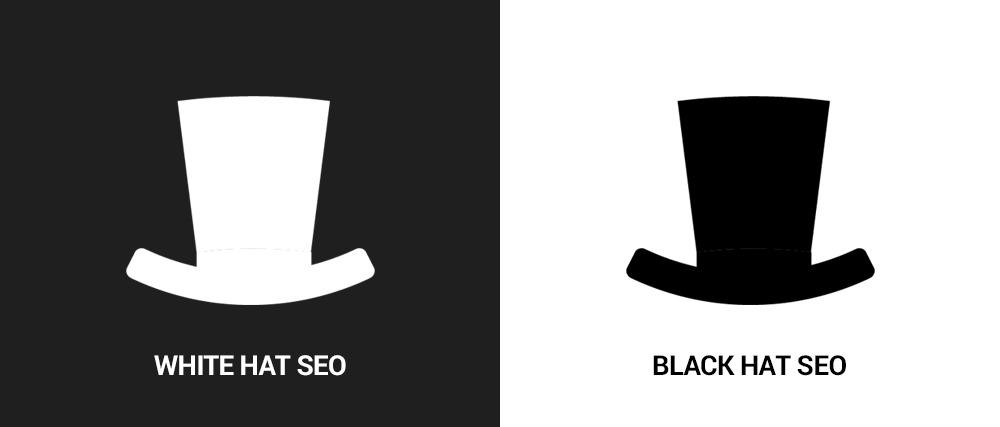
A blog post should be between 1200 to 1500 words. This is not more than six minutes long, and you should be able to provide enough detail to make the content worth reading. The topic and the nature your content will dictate the length of your post. After writing several posts with great content, you can be sure that your articles are engaging and well-written. This guide will help you determine the right length for your blog posts.
Maximum blog post length should be between 1200- 1500 words
The ideal length of a blog post should not exceed 1,000 words. Your chances of it being shared and seen by more people will rise if you add more words to your posts. It will also improve SEO. HubSpot found out that only one third of top-performing blogs are under 1500 words. Although length is important, quality content is more important than quantity. The length of your blog post should be determined by your audience and the meaning of each word.
Your purpose and goals will determine the length of your blog posts, regardless of whether they are personal blogs or business blogs. Search engines will consider many factors when ranking your website for SEO. You need to write better content than your competitors in order to be noticed by search engines. Blog posts are meant to grab attention and provide information that will help your reader.
Writing long blog posts takes time. It's not uncommon for a single blog post to take up a quarter of a day. There are tools to help you, whether you are focusing on SEO or creating a blog for a client. By using a software editor to review your writing as you write, you can optimize the length of your posts. It is possible to optimize your blog posts by adding a line break. This will make it easier for readers to understand.
Make sure you choose the right topic before you decide on the perfect length blog post. If you're writing about a product, make sure you're able to explain it in an easy-to-understand way. A summary of a product should not exceed 2000 words. To make your article more engaging to your readers, you may want to include visuals if you're writing about a complex topic.
Studies have shown that longer content gets more links and shares, and is more likely get read by more people. This is especially true for content that is opinion-forming or research-backed. Interestingly, according to Buzzsumo, more than half of all content online is less than 1,000 words. This threshold will increase your chances of being successful on social media. After you have written 2,000 words, the effects stop. An article should average seven minutes in length to make a great blog post.
It takes less that six minutes
It depends on who your audience is and how long the blog post is. Long-form content is more beneficial for SEO and user engagement. However, the length of your blog post should not be too long, as long as it is readable. You should have at least one blog post per day. This will help increase your visibility and improve your SEO performance.

You should ultimately be able determine the length that works best for your audience. This will allow you to determine the right length for your blog post. This will allow you to create a blog post that addresses your questions. While the content may vary in length, a good rule is to limit it to between 500 and 600 words. The content should be representative of your business and brand, regardless of its length. You will find that your audience appreciates the content you create, which will result in more customers and visitors.
Medium research suggests that the ideal length for a blog post is between one to seven minutes. Readers are more likely to skip a post longer than seven mins. Although most blogs are between two to three thousand words long, there are a few exceptions. Blogs over six minutes usually include many 'howto' steps. Try to keep them as short as possible.
It's full of details
A long blog can help you reach your audience by providing them with valuable information that encourages them to return to your website. Long blogs can be more interesting for readers as they are easy-to-read, have a great topic, and are easy enough to share. A blog post should follow certain guidelines. It is important to have a clear title, a consistent style, and structure. The length should also be within the guidelines.
According to medium research, a blog post should be seven minutes in length. The average total seconds increase as a post becomes longer, peaking at seven minutes. A seven-minute read will contain approximately 1,600 word. From a search engine optimization perspective, SerpIQ analyzed the top 10 results to determine the ideal post length. The measurement of length also includes sidebar text. According to the study, a post of seven minutes and longer contains more information than one or two paragraphs.
The ideal blog post length varies depending on the topic. More detailed and broader topics are better explored through larger-picture views. Larger posts can be more dynamic. It is up to the content of the post whether it is lengthy or short. But if it's written well, it's likely that it will be read by many people. A quality article is one that the reader can easily scan.
It's optimized for SEO
Since the invention of search engines, the question about the length of a blog post has been asked. The answer depends on the subject matter, but it generally falls between 1,000 and 2000 words. Keep your posts within the following range if you want to rank well in SEO. Writing shorter posts can help you get more traffic to the blog. You won't waste your readers time by writing long posts.

While some articles are shorter than 2,000 words, it doesn't mean they are less effective. Many readers don’t seek a guidebook or a Bible; they simply want quick answers and an explanation. Longer content is not always better. Some search intents can be satisfied with just 300 words while others require 600 words or more. To find the optimal length for your blog post, first analyze your competition and figure out what your audience is looking for.
Quality information is what readers want, not keywords. Your keyword should be incorporated only once a month. A few images can help make your blog posts visually appealing and improve SEO for the keywords. For your blog posts to be more easily readable, you might consider adding images. And remember, you don't have to write a blog post of 500 words, either.
A blog post should have a minimum length of 1,500 words. However the longer the blog post, the better. As long as the content is interesting and informative, it is best for SEO. The longer your blog posts are, the higher you will be ranked in search engines for those keywords. Remember that search engines look at the time spent on a page to determine which keywords will be most effective. However, don't overdo it.
FAQ
How can I get started with SEO for my site?
Understanding what people are searching for in search engines such as google is the first step to getting a Google rank. This guide will show you how to create content that is highly ranked by Google. Check out our other guides about content marketing.
To start, you'll want to create a plan and think about what kind of keywords you want to target. There are two types if keywords: broad keywords like "digital market" and specific keywords like "seo".
Next, you'll need to choose a few goals: increasing brand awareness, driving leads, or boosting sales.
Once you have established your goals, you can start writing content. You can find some helpful tips here on writing content for SEO.
After you have written your content, it is time to post it to your website or blog. If you have a site, this could mean updating the pages. If not, you'll need to hire a web designer who can help you set one up.
After you publish your content, link back to it on relevant blogs and websites. This will improve its visibility and expose it to more people.
How often should I update the website?
There are several options to update your site. A Content Management System (CMS) is one way to update your website. This will allow you to edit all the content on your site easily without needing any code.
Another option is to install a plugin that automatically updates the website. These plugins can either be purchased from WordPress stores or installed by you.
WPtouch and Yoast are two other free plugins. It's a good idea test out different methods to see which works best.
What is a PPC Ad?
Pay-per click ads are text-based adverts that appear at the top and bottom of pages.
These ads are extremely targeted. This means that advertisers only pay when someone clicks.
PPC advertising is very similar in concept to Pay Per Call advertising. We'll talk more about this later.
Statistics
- If two people in 10 clicks go to your site as a result, that is a 20% CTR. (semrush.com)
- 64% of marketers actively create SEO campaigns because they help hit multiple key performance indicators (KPIs), including increasing traffic, helping your site rank for relevant keywords, improving your conversion rate, and much more. (semrush.com)
- These guides are designed and coded 100% from scratch using WordPress. (backlinko.com)
- : You might have read about the time that I used The Content Relaunch to boost my organic traffic by 260.7%: (backlinko.com)
- And 90%+ of these backlinks cite a specific stat from my post: (backlinko.com)
External Links
How To
How do I know if I am doing good SEO?
There are several ways you can tell whether or not you're doing great SEO:
-
Your bounce rate should never exceed 30%. This means that users will abandon your page without clicking any other link. A high bounce ratio means that your audience does not trust your brand, or is not interested in the products you are selling.
-
Your site visitors visit many pages - this indicates that they are engaged with it and finding information useful.
-
Your conversion rate keeps improving. This is because your audience is becoming more aware of your products or services and wants them to buy them.
-
Your average time on site is increasing - people spend longer viewing your content.
-
Increased traffic from search engines is a sure sign you're doing excellent SEO.
-
You are receiving more shares on social networks - this means your content is being shared and reaching other audiences than your followers.
-
You are getting more comments in forums - this means that people respond positively about your work.
-
Increased engagement means more likes and tweets around your site, as well as shares, shares, likes and likes on posts.
-
Your rank in SERPs keeps increasing, a sign your hard work is paying off.
-
You are receiving more leads through your website. This indicates that people found your website by accident and are now contacting it.
-
You are seeing an increase in sales - this means that people who visited your site looking for your products or services are purchasing them.
-
You get more views and comments on your blog posts, which means that people find your content useful and interesting.
-
More people subscribe to your email newsletter means you have earned their trust enough to allow them to receive updates on your business.
-
Sales are rising - this shows that people like you and your products so much that they are willing to pay for them.
-
You have more social media followers, which means that your fans are sharing your content and engaging with you brand.
-
You're getting more PR mentions - this shows that journalists are talking about your brand online. This boosts your image and raises awareness for your company.
-
Your brand is being recommended frequently - this means other companies are also recommending your brand.
-
People keep returning to your website - this shows your customers are happy with your work and will come back again the next time they need your help.
-
Your competitors are losing ground. This is because they didn't spend as much on their SEO campaigns, which makes them look bad.
-
Your brand's image changes - this indicates that your brand has gained popularity among a new set of customers.